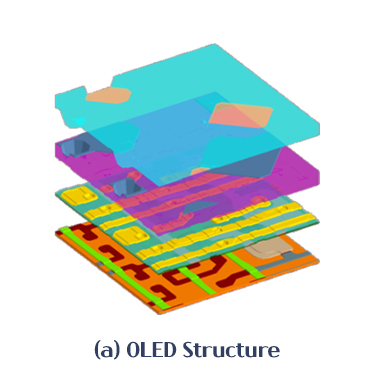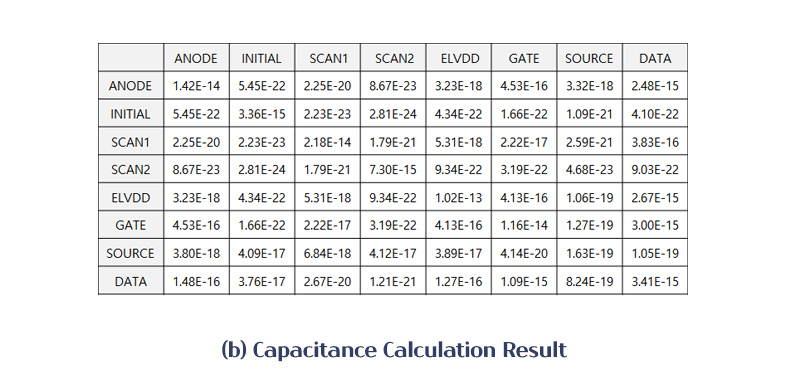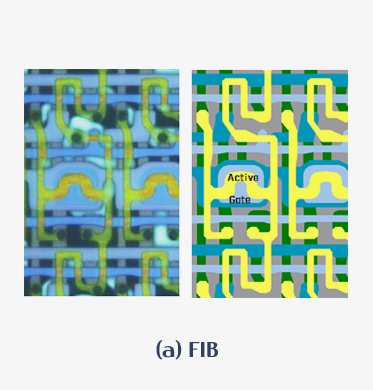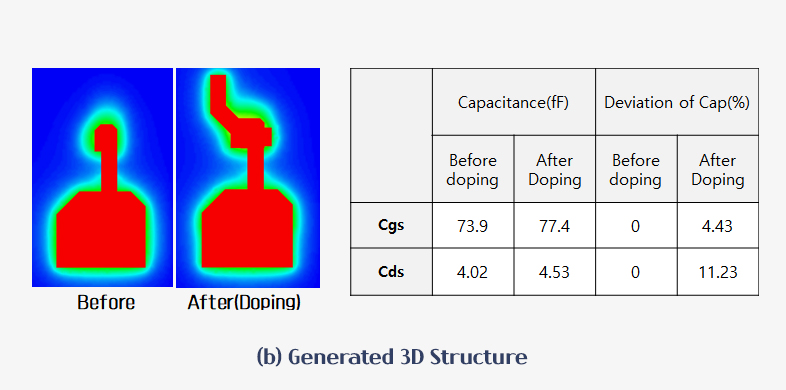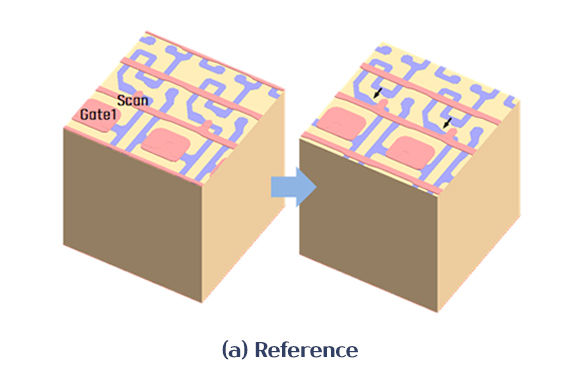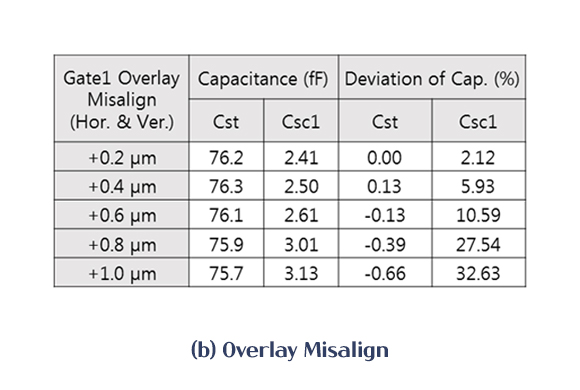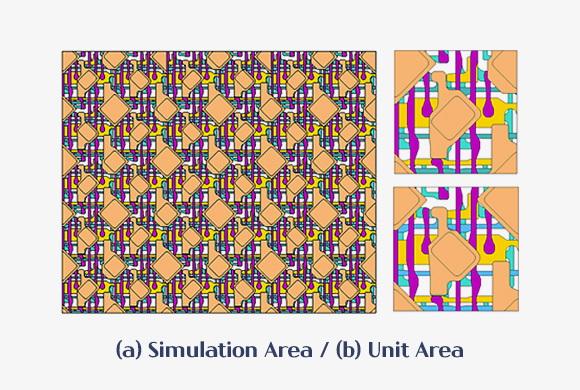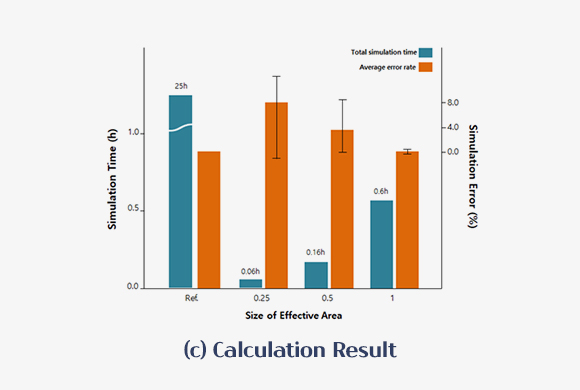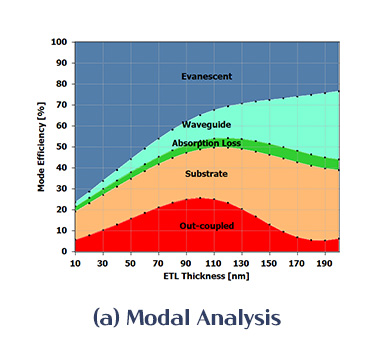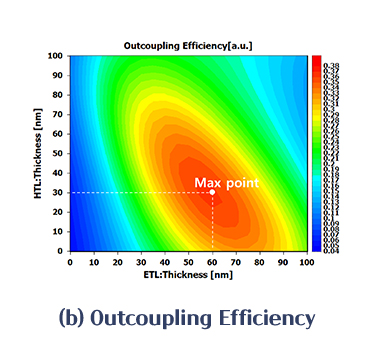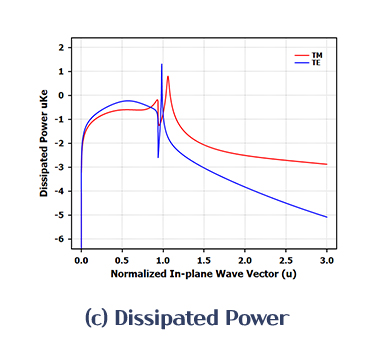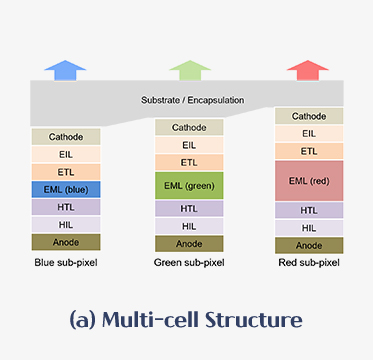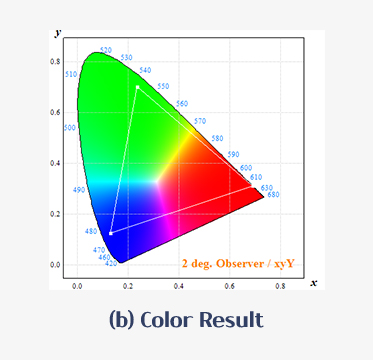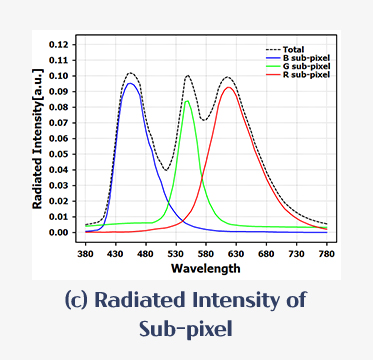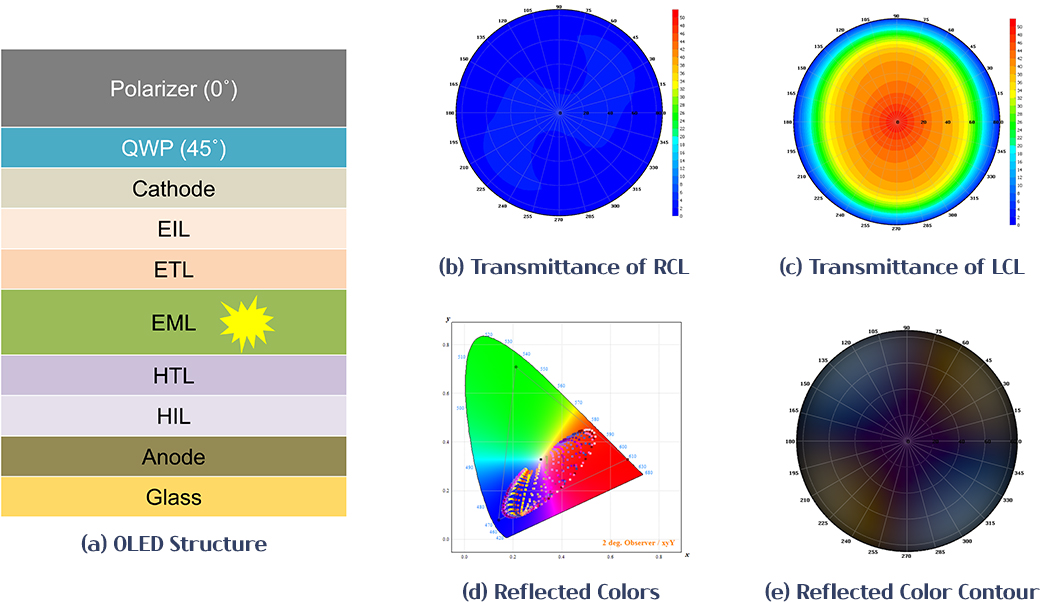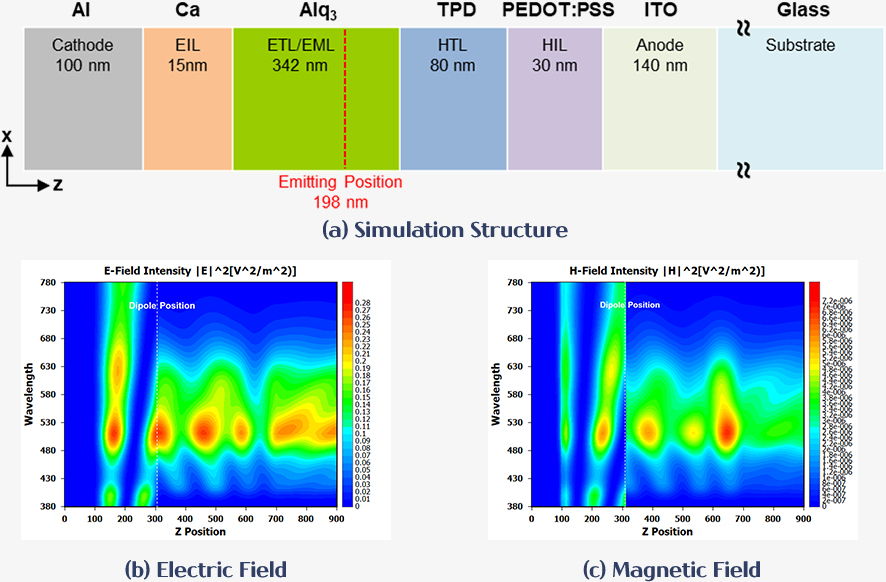OLED Application
OLED Capacitance Calculation
Compensation of OLED pixel circuits and advanced driving techniques should be performed in OLEDs because of the non-uniformity of the mobility and threshold voltage of the driver TFTs. In addition, the calculation of capacitance is essential to improve the compensation accuracy of pixel circuits as modern OLEDs use many more layers in order to make them more efficient and durable. TRCX provides rapid and accurate calculations by using a specified analysis algorithm to process the data for analyzing OLED pixel circuits.
Doping Simulation
An active layer is metalized by ion implantation using a self-aligned mask in the LTPS fabrication process. The same principle as an actual process is applied when calculating the capacitance through TRCX. Engineers can extract the accurate capacitances based on the realistic 3D structure as well as analyze the potential distributions before & after ion implantation in the active layer as shown in figures below.
Process Margin Analysis
One of the major challenges in manufacturing the display panels is to investigate the main factor caused by process margins such as CD margin, mask mis-alignment, and change of thickness. TRCX offers batch simulation and integrated results including parasitic capacitance analysis in a distributed computing environment to improve the electro-optical properties of displays and minimize the defects.
Simulation of Repetivtive Structures
The simulation area is segmented into repetitive TFT arrays as unit areas when calculating the capacitance for the MxN area of an OLED panel. The electric field by the surrounding electrodes should be considered for the accurate calculation of capacitance. Computer memory usage and simulation execution time can be reduced with the optimal segmentation & reconstruction algorithm of TRCX. In addition, engineers may check the simulation results for total and effective simulation areas.
OLED Simulation(Luminous Efficiency)
OLED devices largely depend on the properties of various materials and thickness of the staked structure. modal analysis, outcoupling efficiency, and dissipated power considering micro-cavity that occurs depending on the calculation conditions.
OLED Simulation(RGB Cell)
In microcavity OLED devices, each RGB sub-pixel is designed with a different structure to optimize the optical efficiency. To accurately analyze the designed structure, pixel-by-pixel analysis considering three sub-pixels is required. TechWiz OLED enables simulation to easily compare and analyze the results by setting each structure and ratio of each sub-pixel.
OLED Simulation(Polarization)
The circular polarizer is used to reduce the reflection of an OLED display. The used film can also cause color difference in the viewing angle and lower light efficiency. Therefore, an optimized circular polarizer design is required. TechWiz OLED is very useful for designing polarizer and retarder film.
- #TechWiz OLED


